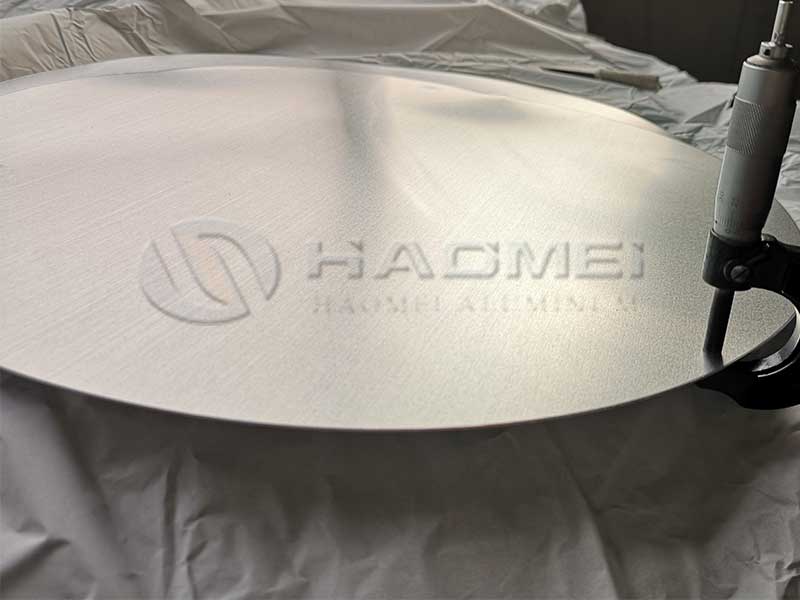When it comes to road safety and traffic management, road signs play an indispensable role. Behind every clear and durable road sign lies a critical component: the aluminum circle. Aluminum circles, specifically engineered for road sign applications, marry strength with versatility, offering an unbeatable solution for all signage needs.
In t
The Essential Role of Aluminum Circles in Road Signs
Road signs must endure diverse weather conditions, from intense sun exposure to heavy storms, while maintaining their visual clarity and structural integrity. Aluminum circles act as the substrate or blank material from which round signs are fabricated, offering:
- Corrosion resistance: Aluminum’s natural oxide layer protects against rust and environmental degradation, ensuring road signs last for decades.
- Lightweight strength: Aluminum’s excellent strength-to-weight ratio means circular signs can be mounted safely on poles without requiring heavy support structures.
- Smooth surface: An ideal canvas for reflective coatings and printed graphics, aluminum circles provide uniform plating that aids nighttime visibility.
- Recyclability: Aluminum circles can be recycled from post-consumer or industrial scrap, supporting sustainability goals in infrastructure projects.
Technical Specifications and Parameters
Aluminum circles for road signs must meet rigorous parameters under established industry implementation standards to guarantee performance quality.
Common Alloy Selections
For road sign applications, the commonly used aluminum alloys are:
| Alloy | Chemical Composition (%) | Temper |
|---|---|---|
| 1070 | Al 99.7, Fe 0.2, Si 0.05, Cu 0.05, Zn 0.05, others <0.1 | O, H14 |
| 1100 | Al 99.0, Fe 0.6, Si 0.3, Cu 0.05, others <0.05 | O, H12, H14 |
These alloys are prized for:
- High purity aluminum (1070 & 1100 grade): Enhancing corrosion resistance, electrical & thermal conductivity.
- Workability: Important to achieve smooth surfaces required by sign sheeting.
- Formability: The ability to roll into circles without cracking.
Temper & Mechanical Properties
Temper designations such as O (annealed) and H14 (strain-hardened by rolling) indicate the mechanical property profiles necessary for sign substrates:
| Temper | Yield Strength (MPa) | Tensile Strength (MPa) | Elongation (%) | Applications |
|---|---|---|---|---|
| O | 25 – 35 | 50 – 110 | 30 – 50 | Easy forming operations |
| H14 | 90 – 110 | 110 – 140 | 2 – 6 | Enhanced strength signs |
Thickness & Dimensions
Typical thickness of aluminum circles for road signs range from 0.8 mm to 2.0 mm based on the sign size and local standards, with diameters tailored between 120 mm to over 1000 mm depending on regulation:
- Thickness: 1.0 ± 0.05 mm is standard for most circular traffic signs.
- Diameter tolerance: Generally ±1 mm to ensure precise machine cutting without scrap wastage.
Implementation Standards Governing Aluminum Circles for Road Signs
To ensure quality and reliability, aluminum circles must comply with relevant local or international standards including:
- ASTM B209: Standard specification for aluminum and aluminum-alloy sheet and plate, ensuring chemical, mechanical, and dimensional conditions.
- EN 573-3: Aluminum and aluminum alloys - Chemical composition and form of wrought products.
- AASHTO M-182 (USA): Covers requirements for aluminum materials used in highway traffic sign panels and blank stock.
Compliance assures manufacturers and authorities of predictable performance for continuous service.
Chemical Composition Table – Typical Analysis (for 1100 Alloy Example):
| Element | Content (%) |
|---|---|
| Aluminum (Al) | 99.0 min |
| Iron (Fe) | 0.40 max |
| Silicon (Si) | 0.30 max |
| Copper (Cu) | 0.05 max |
| Zinc (Zn) | 0.10 max |
| Manganese (Mn) | 0.05 max |
| Others (each) | 0.05 max |
| Others (total) | 0.15 max |
Manufacturing Process: Crafting Aluminum Circles for Signage
The creation of aluminum circles starts with rolling aluminum alloys into flat sheets of prescribed thickness under controlled temperature conditions to maintain the alloy composition and mechanical properties. Then, advanced blanking or shearing machines progressively punch circular blanks with fine edge finishing.
Post cutting, the circles undergo surface cleaning and inspection to ensure absence of defects. They are commonly anodized lightly or pre-treated to guarantee bonding strength with retro-reflective sheeting materials, often conforming to ASTM D4956 standard types for visibility.
Applications of Aluminum Circles in Road Sign Manufacture
- Regulatory circular traffic signs such as speed limit, prohibition, or mandatory instruction signs.
- Warning signs with interactive LED enhancements: Lightweight aluminum circular bases allow rapid heat dissipation.
- Reflective sign bases: Aluminum circles form the backing for high-intensity prismatic sheeting increasing night visibility.
- Temporary roadwork signs: Portability advantages due to aluminum’s weight profile.








